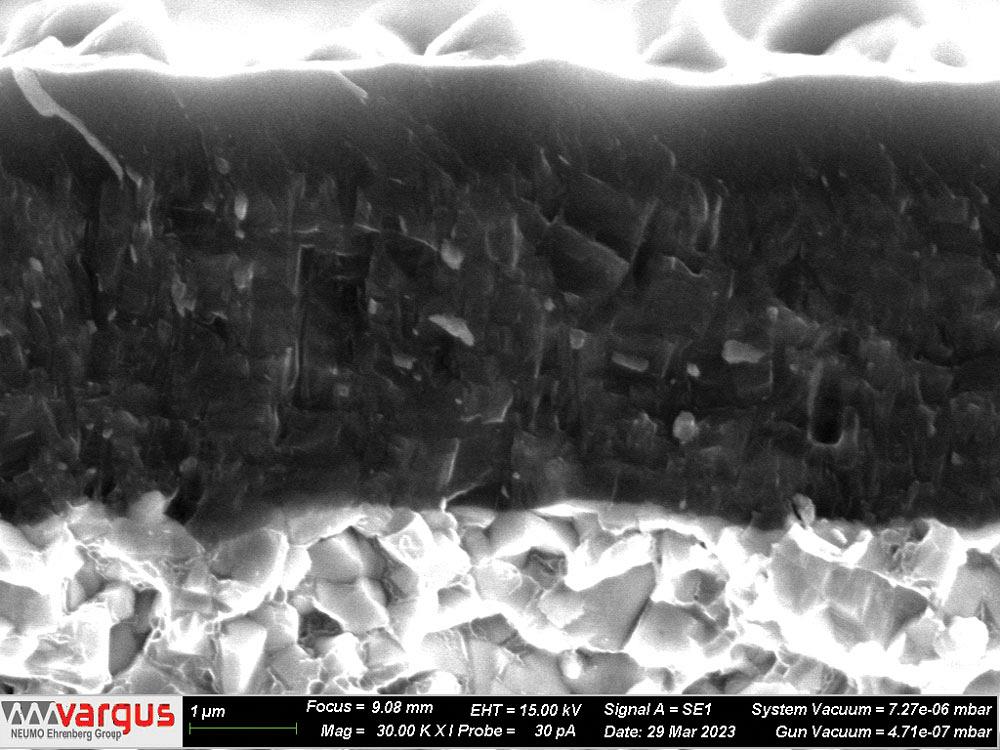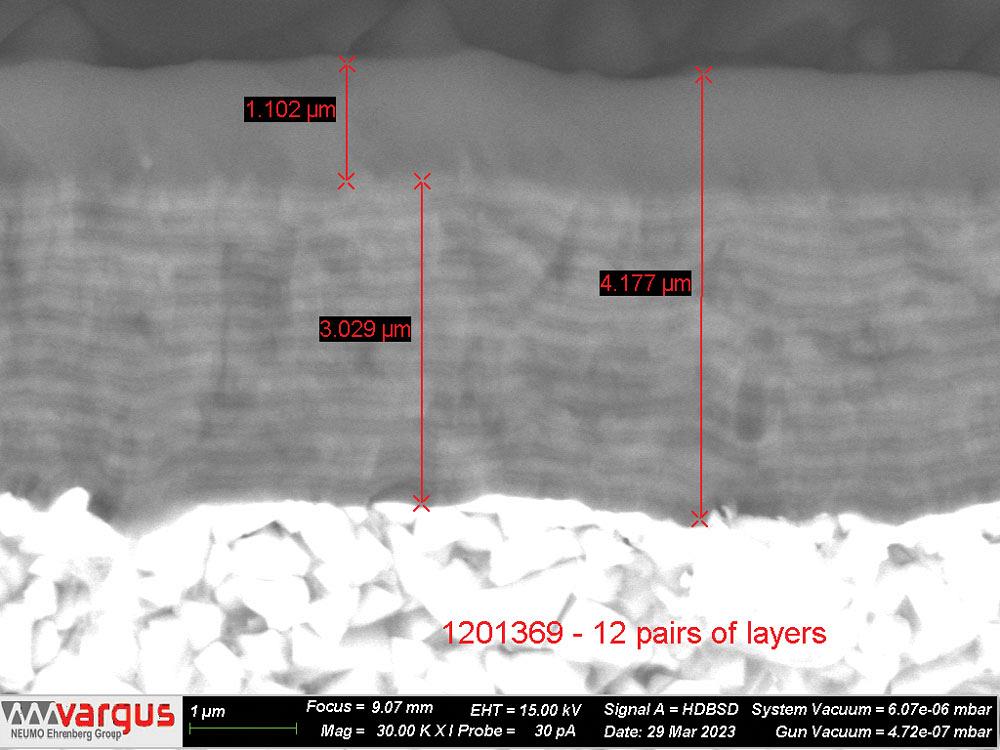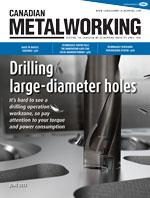Associate Editor
- FMA
- The Fabricator
- FABTECH
- Canadian Metalworking
The development and composition of cutting tool coatings
Rachel Israel of Vargus discusses various trends in coating technology
- By Lindsay Luminoso
- June 27, 2023
- Article
- Cutting Tools

Recently, attention has been placed on research and application of multilayer and nanocomposite coatings.
Rachel Israel, chief scientist and coating developer at U.K.-based Vargus, discusses various trends in coating technology and how the company is researching and developing next-gen coatings to meet market demands.
Looking for more about cutting tool coatings? Check out our feature Back to basics: Cutting tool coatings.
Canadian Metalworking: What are the latest advancements in today’s coatings technology?
Rachel Israel: The ever-increasing trend regarding the productivity (machining speed) and the quality of the machined components, along with meeting of ecological standards (minimum or no lubrication) opens up great demands on the coating (tool) materials. Besides high hardness, a high oxidation resistance and thermal stability are required.
There is a big development with regarding to chemical composition. It has become more complicated as more than one or two elements are used for depositing different coatings. Recently, we are seeing titanium-silicon [TiSi] based coatings that are becoming increasingly stronger.
There are strong activities to increase the oxidation resistance of sputtered boride coatings, like titanium diboride [TiB2], chromium diboride [CrB2], tantalum diboride [TaB2]. The diboride coatings with different elements are designed for difficult-to-machine materials such as TiAl6V4 aerospace alloy and aluminum alloys.
The TiB2 coating with optimized set of characteristics shows great promise for the machining of Ti alloys.
Big progress that has been achieved and target suppliers are able to alloy target with silicone, containing different compounds like silicide, titanium silicon [TiSi2], and chromium silicon [CrSi2]. With these, they can get the silicone into the nearest deposited boride coating. Silicon dramatically increases the temperature range of the coating; it gives it more stability.
Reduction of wear and corrosion, along with increasing thermal stability of tools and mechanical components, presents industrial challenges that demand continuous development of new coating materials and coating design concepts. Recently, attention has been placed on research and application of multilayer and nanocomposite coatings. In our latest development, TiAlN and TiSiN layers were alternatively deposited to produce a nanolayered nanocomposite TiAlSiN coating. Single-layer TiAlN and TiSiN coatings were deposited along with the nanolayered coating.
CM: When it comes to the various categories of coatings, how do customers know which is the best option for them?
Israel: Two methods are essentially used for coating purposes: Physical Vapour Deposition (PVD) coatings and Chemical Vapour Deposition (CVD) coatings. CVD coatings are the first choice when it comes to wear resistance, such as for general turning operations of stainless steels and when drilling into steel, where the thick CVD coatings provide resistance to crater wear. They are also used for milling grades in ISO P, ISO M, and ISO K.
The selection of the right cutting tool is based on the material to machine, power available on machine, fixture stability, and machine dynamics which leads to the right selection of cutting tool material, grades, geometries, depth of cuts and the feeds.
CM: What goes into the development of different types of coatings?
Israel: The main goal of the development of coatings has been to protect cutting tools from abrasive and adhesive wear. However, as coating technology continues to advance, developers have discovered other features that a coating can provide, such as heat resistance and friction reduction.
When developing different types of coating, we need to take into consideration the application used, the cutting material, working condition, and more. As a result, we will be able to increase wear resistance, increase oxidation resistance, reduce friction, increase resistance to metal fatigue, and increase resistance to thermal shock.
When cutting tools are properly coated and perform as designed, the result for the end user is higher cutting data, longer tool life, and the possibility of dry machining.
CM: What is the latest coating trend and how do machining and market trends shape coating technology?
Israel: High power impulse magnetron sputtering (HiPIMS) coatings technology is the right technology for small tools such as micro tools. The HiPIMS process becomes the key to success when every µm determines the success or failure of a micro tool enable us to coat ultra-thin and extremely smooth coating.
In the digital industry electronics or the medical industry such as dental implants or orthopedic implants, ultra-thin and extremely smooth coatings are requested.
The tools used in this application are a few millimetres or even tenths of a millimetre thick. Low tolerances of miniature tools require an extremely smooth coating to reduce both friction and built-up edges. The cutting material of these applications are generally hard materials that are difficult to machine. In this case we need shortening the contact time between chip and tool. The heat input is thus lower and much of it is dissipated with the chip. Oxidation wear is also significantly lower. The result is a long tool life.
With regards to coating thickness the HiPiMS technology enable to reach up to 12µm of coating thickness and in some application allows to replace the CVD technology.
Vargus, www.vargus.com
About the Author

Lindsay Luminoso
1154 Warden Avenue
Toronto, M1R 0A1 Canada
Lindsay Luminoso, associate editor, contributes to both Canadian Metalworking and Canadian Fabricating & Welding. She worked as an associate editor/web editor, at Canadian Metalworking from 2014-2016 and was most recently an associate editor at Design Engineering.
Luminoso has a bachelor of arts from Carleton University, a bachelor of education from Ottawa University, and a graduate certificate in book, magazine, and digital publishing from Centennial College.
subscribe now


Keep up to date with the latest news, events, and technology for all things metal from our pair of monthly magazines written specifically for Canadian manufacturers!
Start Your Free Subscription- Trending Articles
Sustainability Analyzer Tool helps users measure and reduce carbon footprint

Mitutoyo updates its end-user portal

Enhance surface finish with high-speed machining

Equispheres secures $20 million investment round

Solid carbide drills produce precision holes in short chipping materials

- Industry Events
Automate 2024
- May 6 - 9, 2024
- Chicago, IL
ANCA Open House
- May 7 - 8, 2024
- Wixom, MI
17th annual Joint Open House
- May 8 - 9, 2024
- Oakville and Mississauga, ON Canada
MME Saskatoon
- May 28, 2024
- Saskatoon, SK Canada
CME's Health & Safety Symposium for Manufacturers
- May 29, 2024
- Mississauga, ON Canada
















